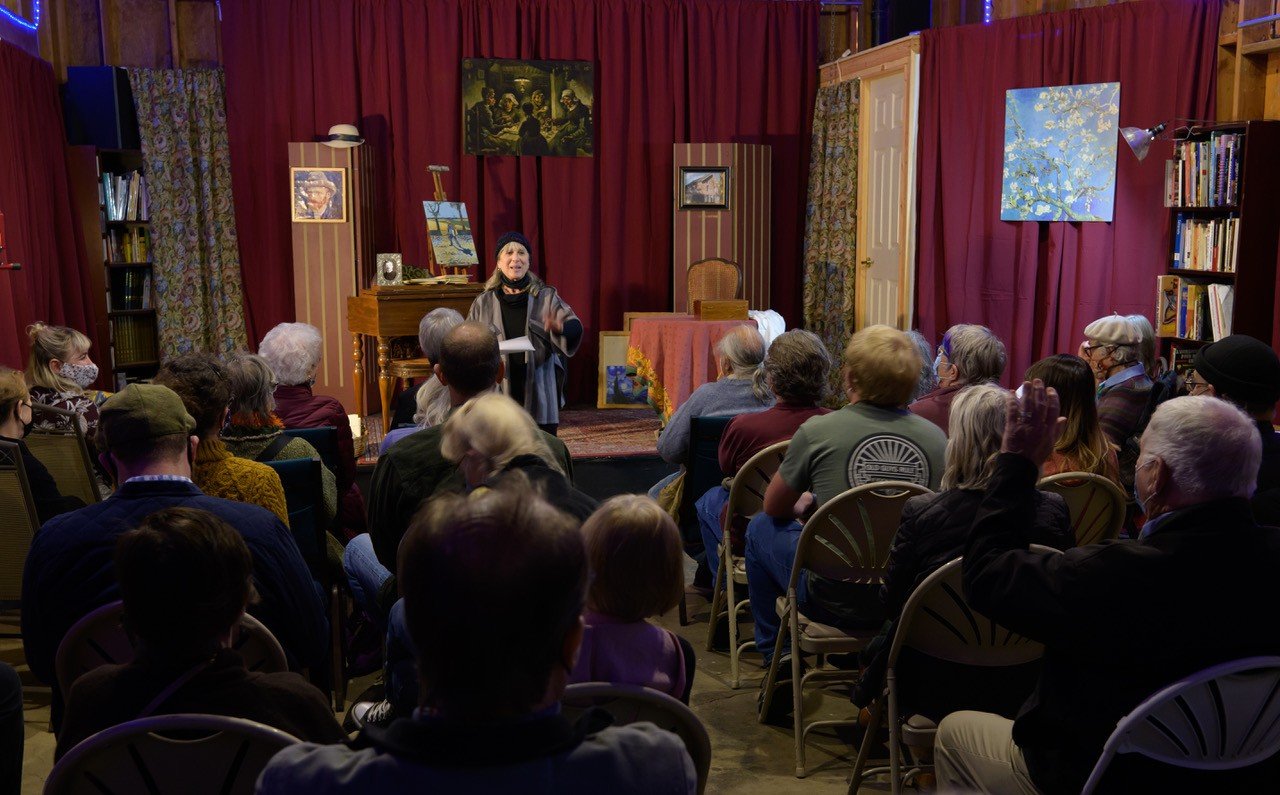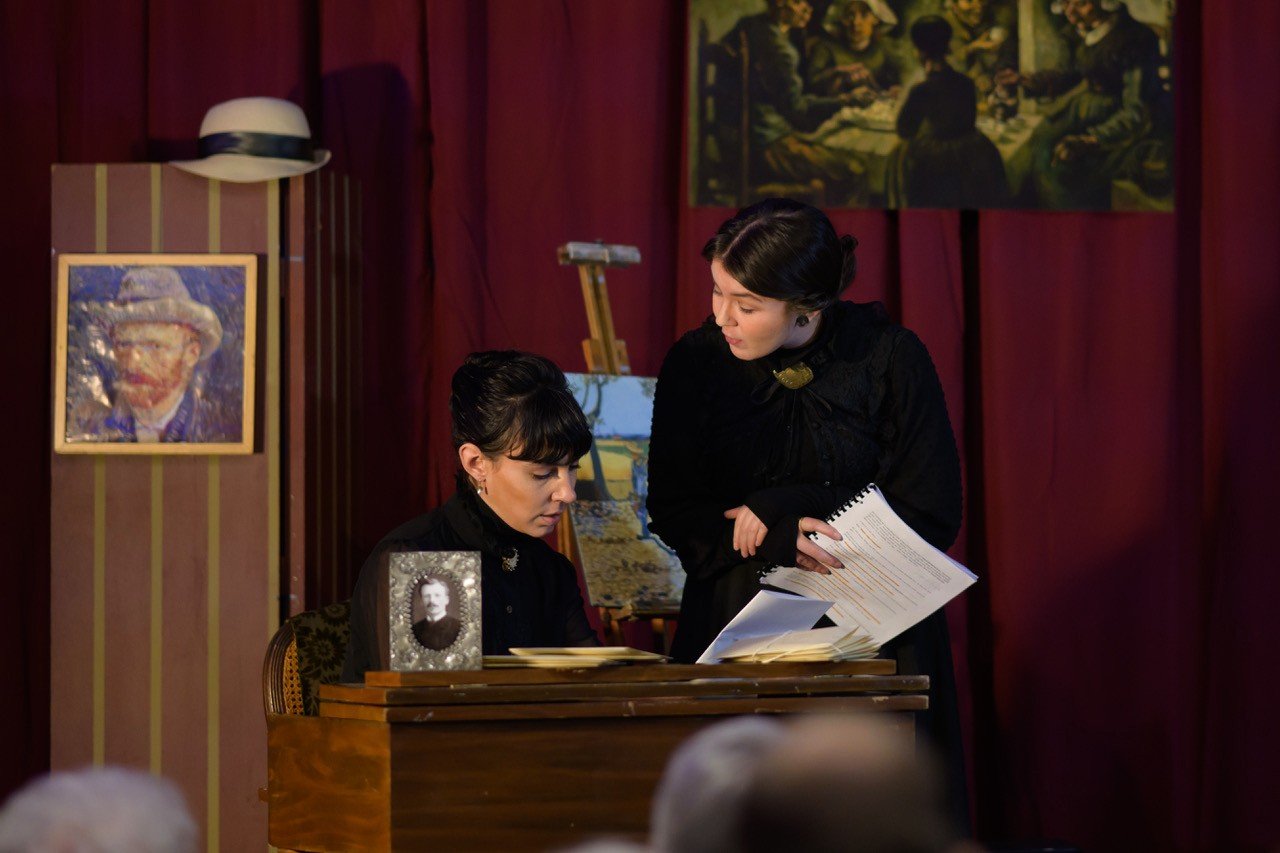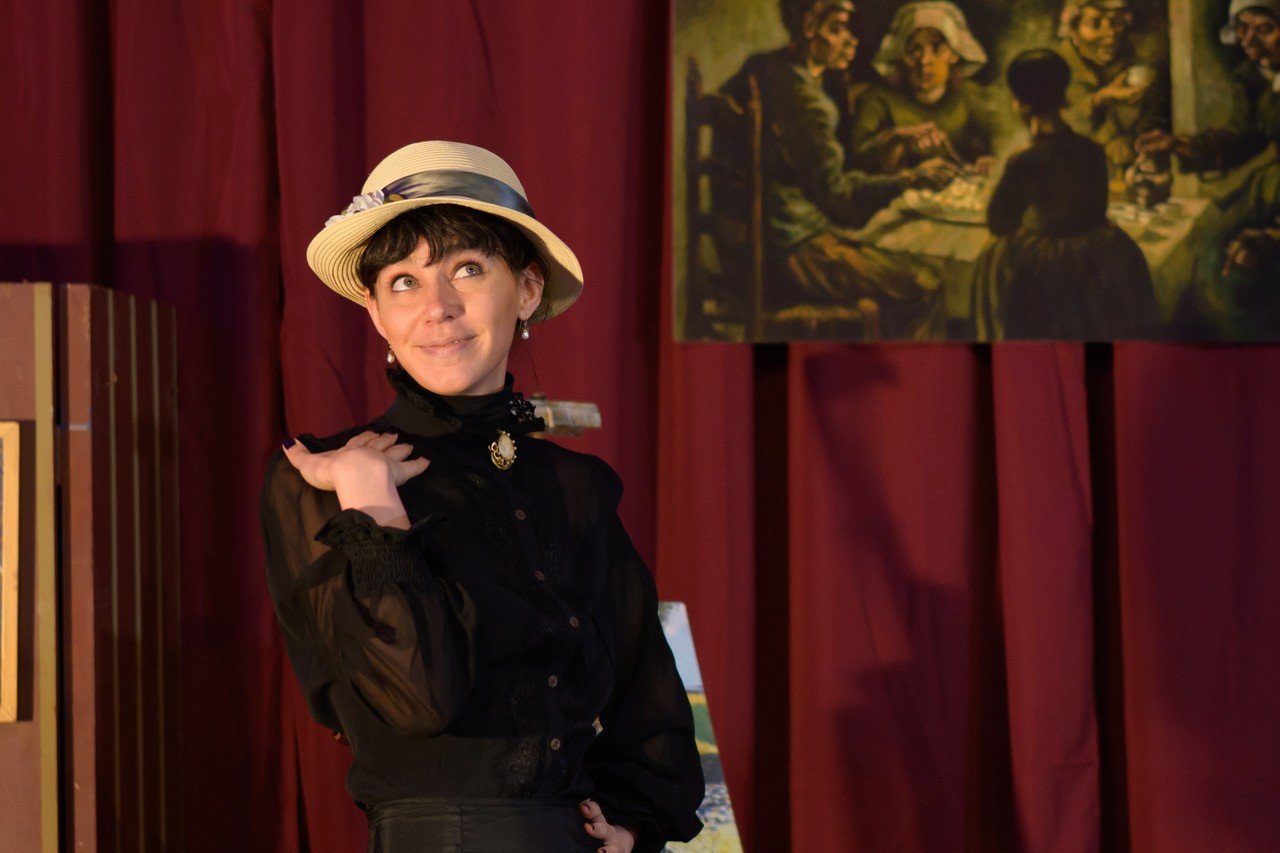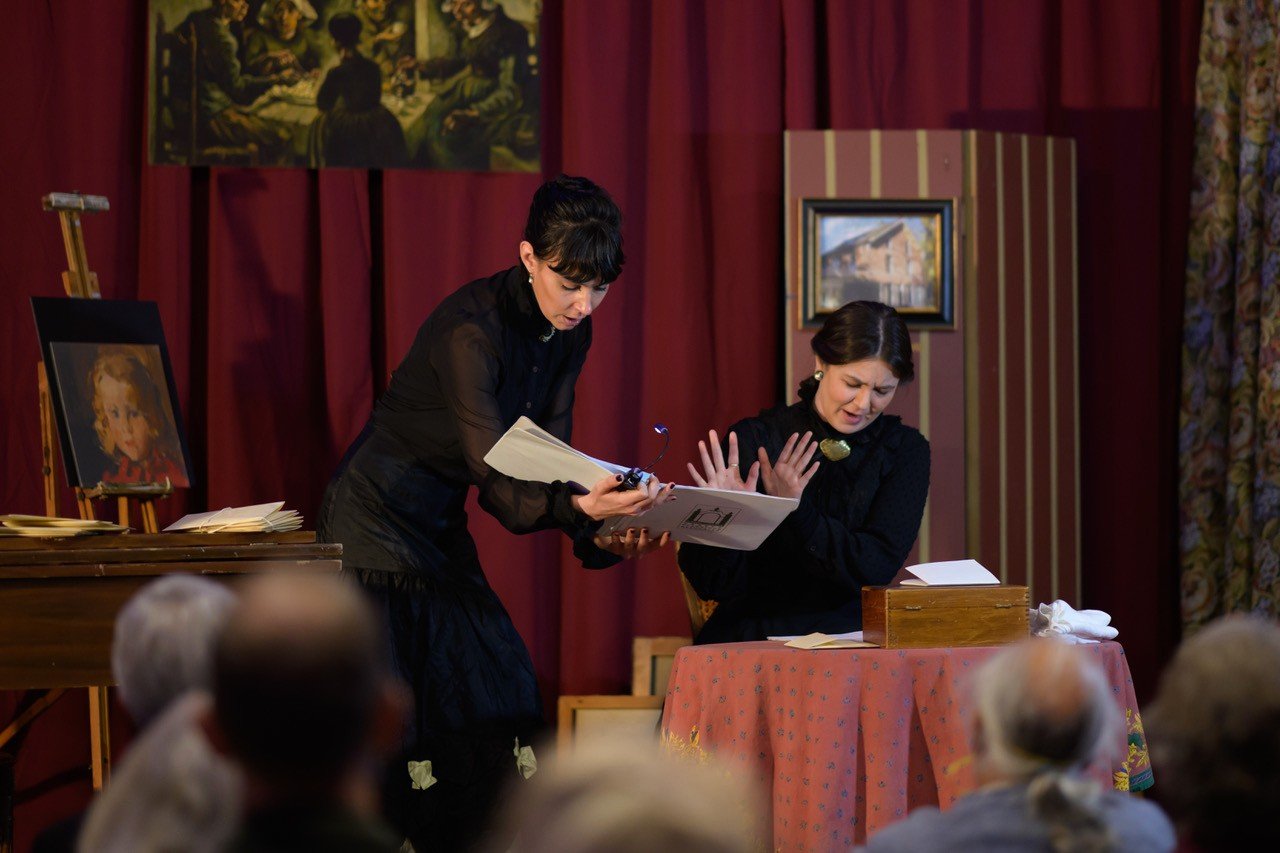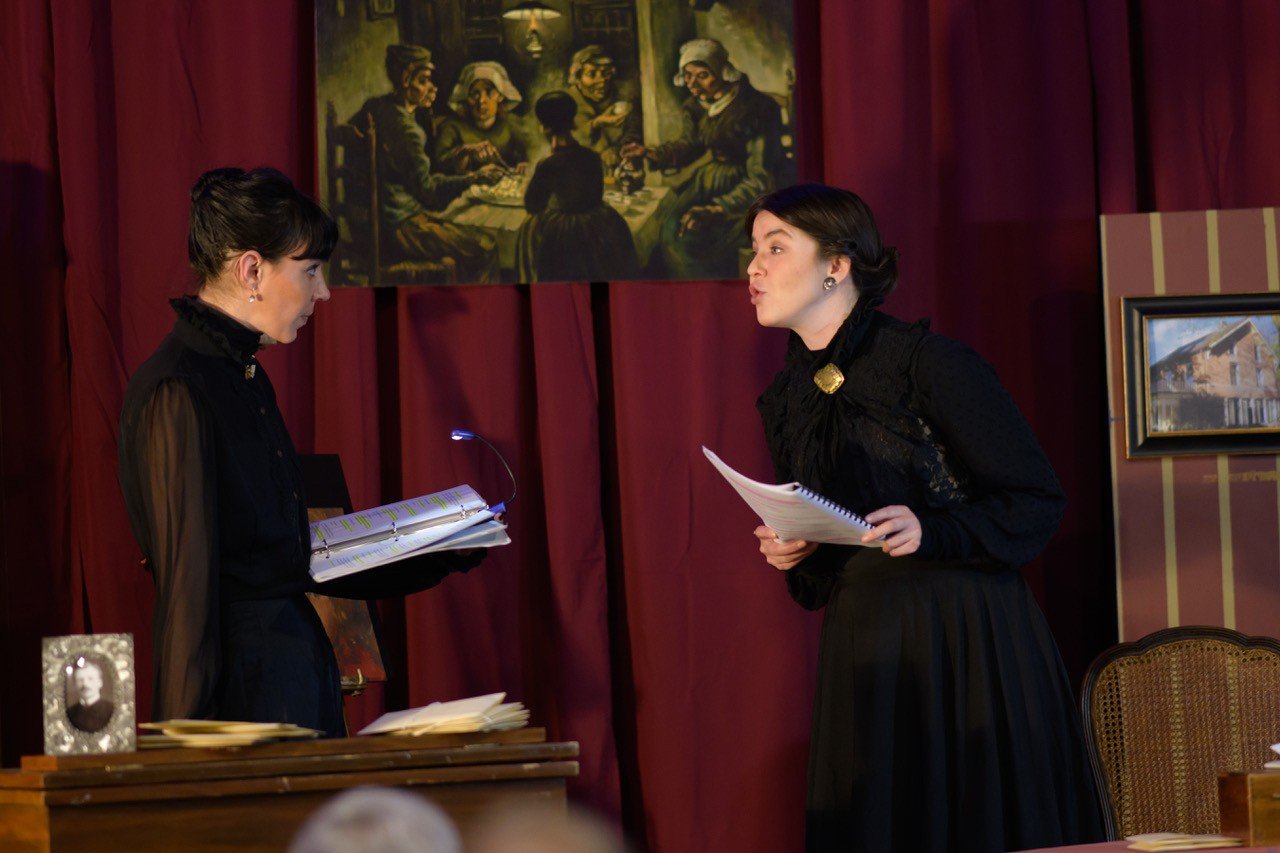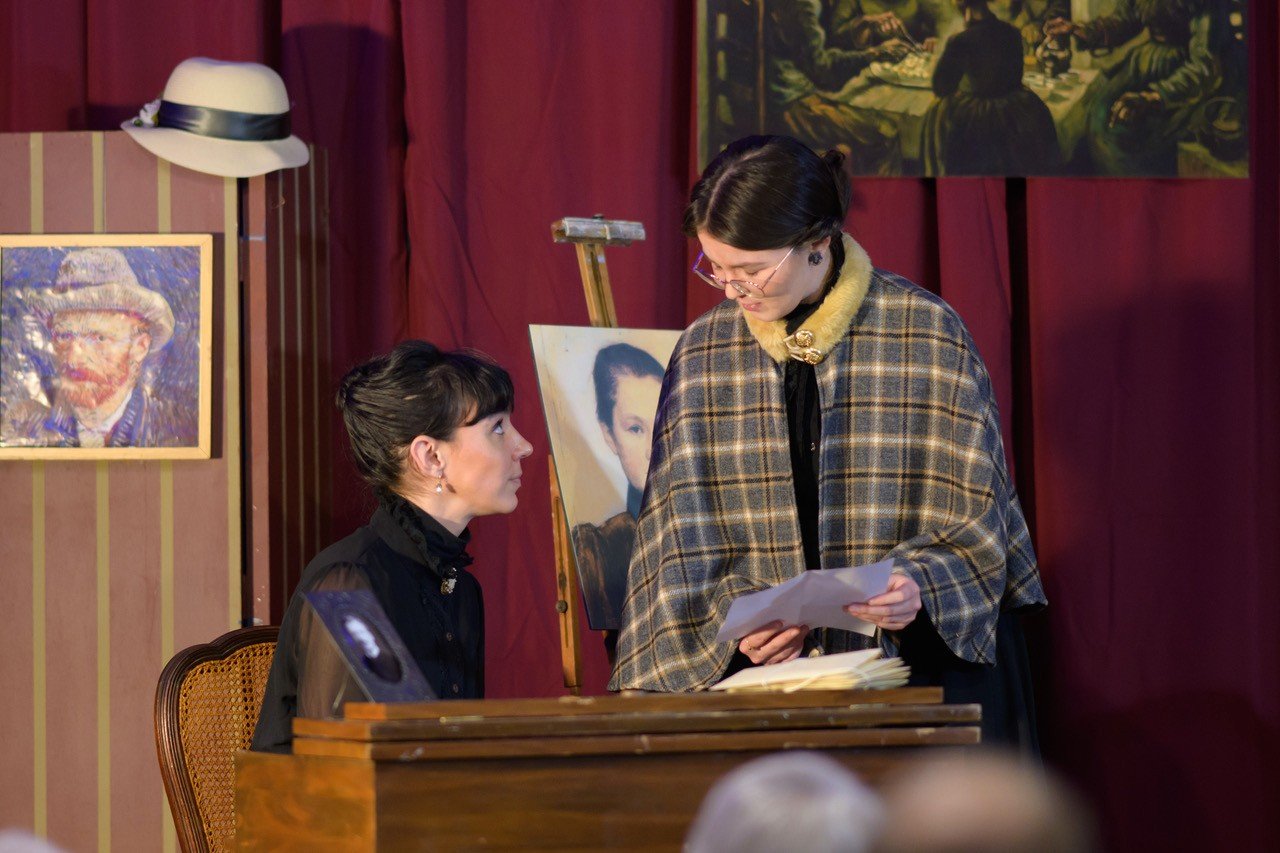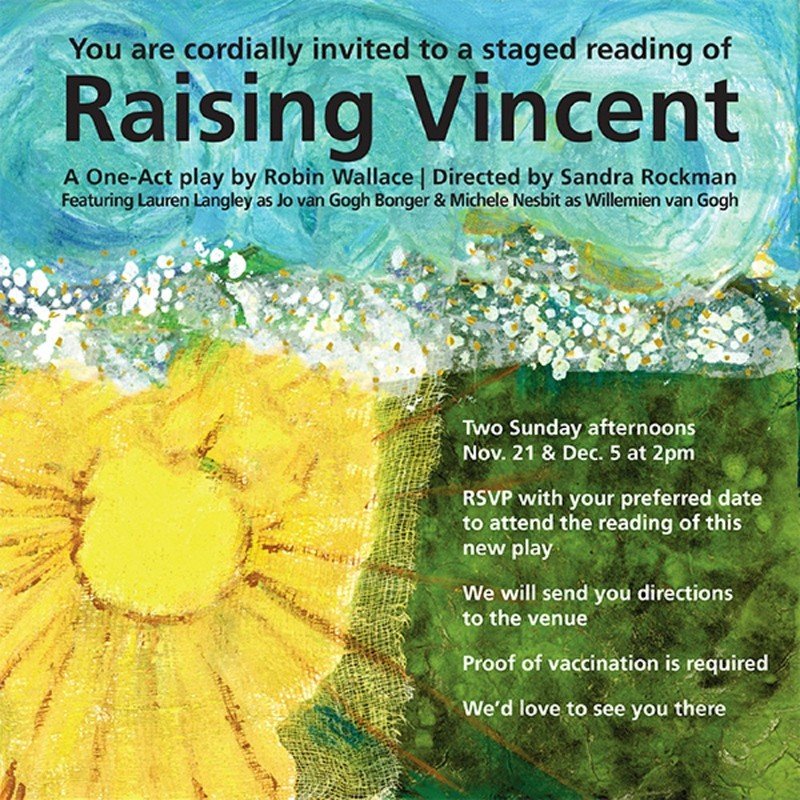Plays
Raising Vincent - Fall 2021
A play in One Act
This play, set in 1892 to 1900 is primarily about Jo van Gogh Bonger, widow of Theo van Gogh, and sister in law of the famous painter, Vincent Van Gogh. The play covers the 8 year period when, having inherited a huge volume of Vincent’s 2000 pieces of art, Jo arranges exhibitions and begins compiling the more than 600 letters exchanged between the 2 brothers. (Theo died 6 months after Vincent.) At the same time, she runs a boarding house in Bussum, (15 km from Amsterdam) while raising her young son, named Vincent after his uncle. Jo is visited regularly by her sister in law, Willemien Jacoba van Gogh, (the favorite sister of both Vincent and Theo) who tries to help with the “letters project, but has her own opinions about how everything should be done. Wil eventually turns against Jo’s mission of having the letters published, mostly concerned about the van Gogh family’s privacy. Scene by scene, the onset of her eventual mental illness becomes apparent. Jo remains determinately committed to the launching of her brother in law’s reputation as a major artist of the 19th Century. Running Time approximately 80 minutes
Quoting from the introduction in the coffee table sized book, “Van Gogh, A Retrospective,” published in 1986… the one mention of Jo van Gogh Bonger:
“The plans Theo initiated in the months following Vincent’s death, to ensure his brother’s legacy produced little in the way of response. The hopes Theo pinned on Durand-Ruel for exhibition pace and on potential biographers Auriel and Gachet all came to nothing. Durand-Ruel refused, Aurier died in 1892 and Gachet apparently lost interest. With Theo’s own demise six months after Vincent’s in early 1890, van Gogh might indeed have been shrouded in utter silence were it not for the efforts of an interested few and for the gumption of Theo’s widow, Johanna van Gogh Bonger.”
My comment: Some gumption!
